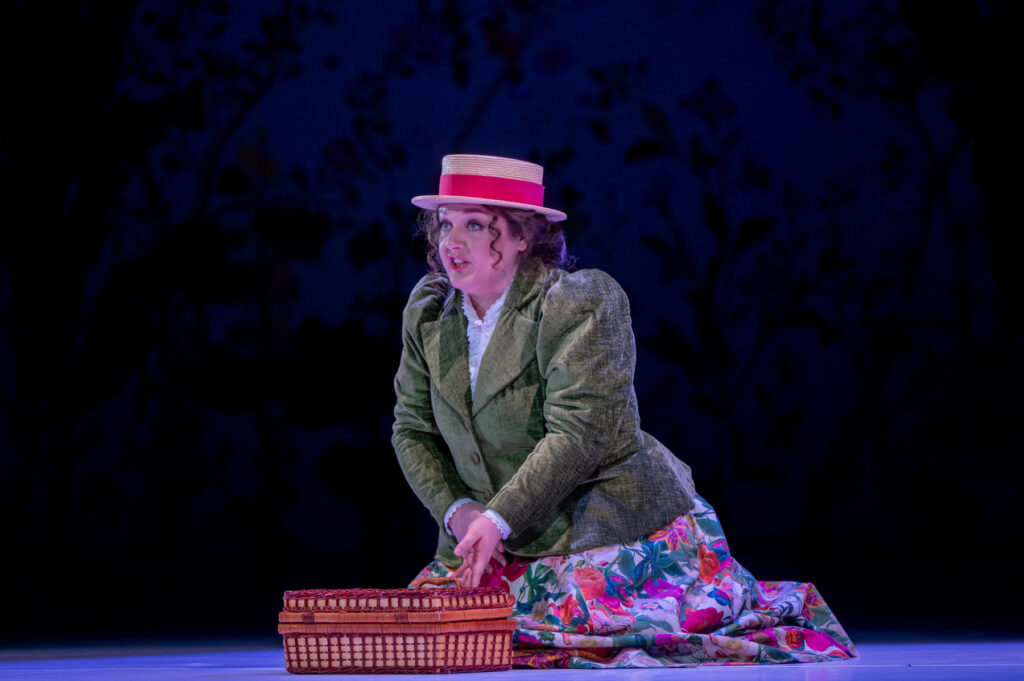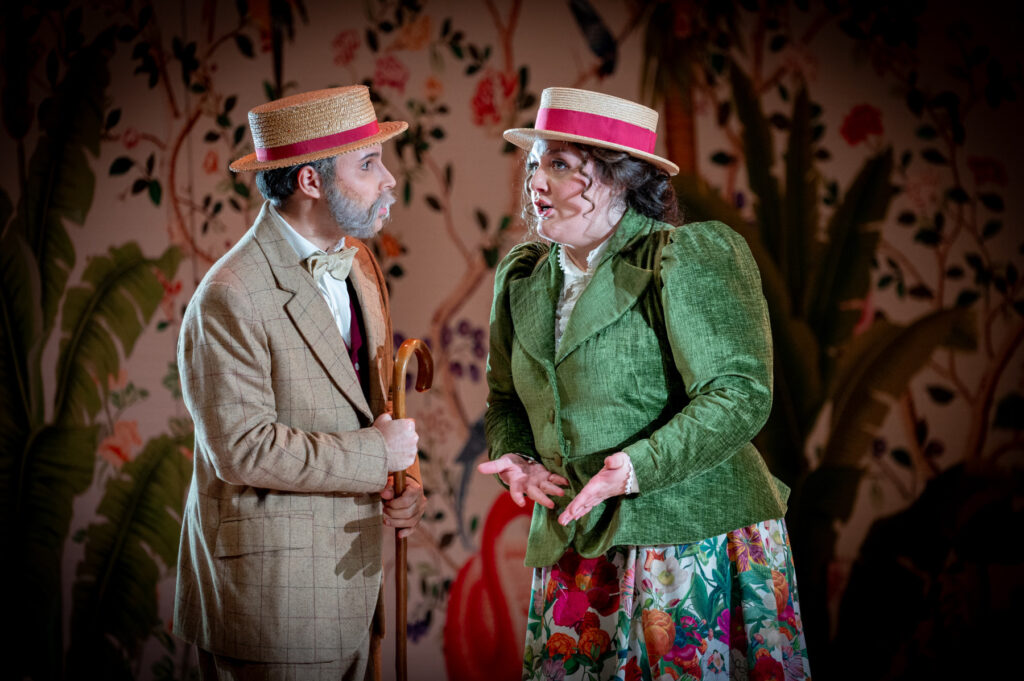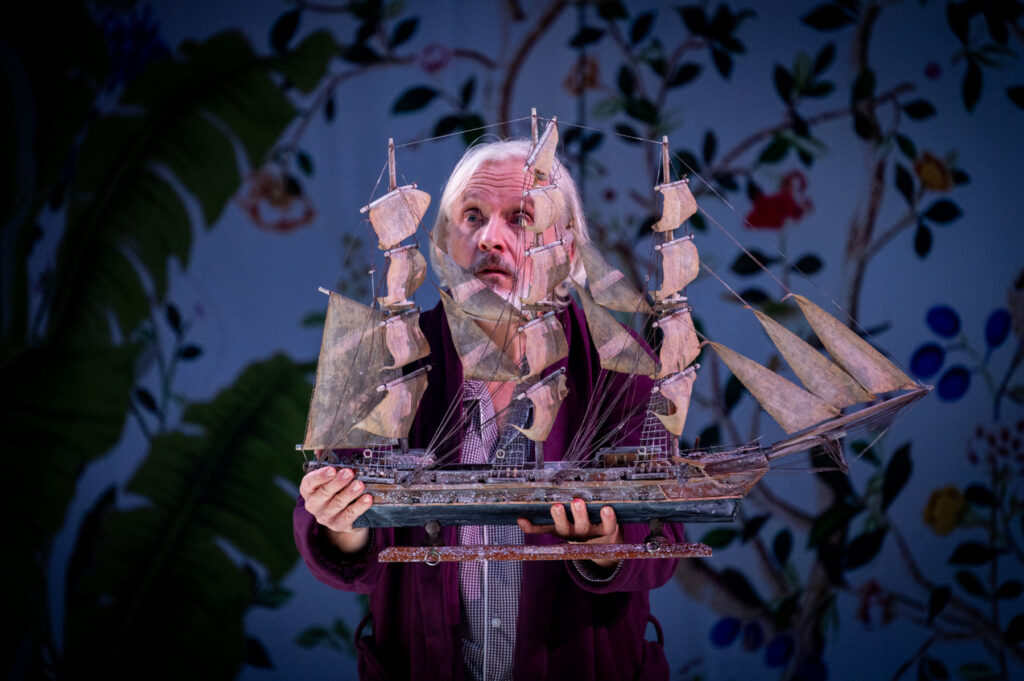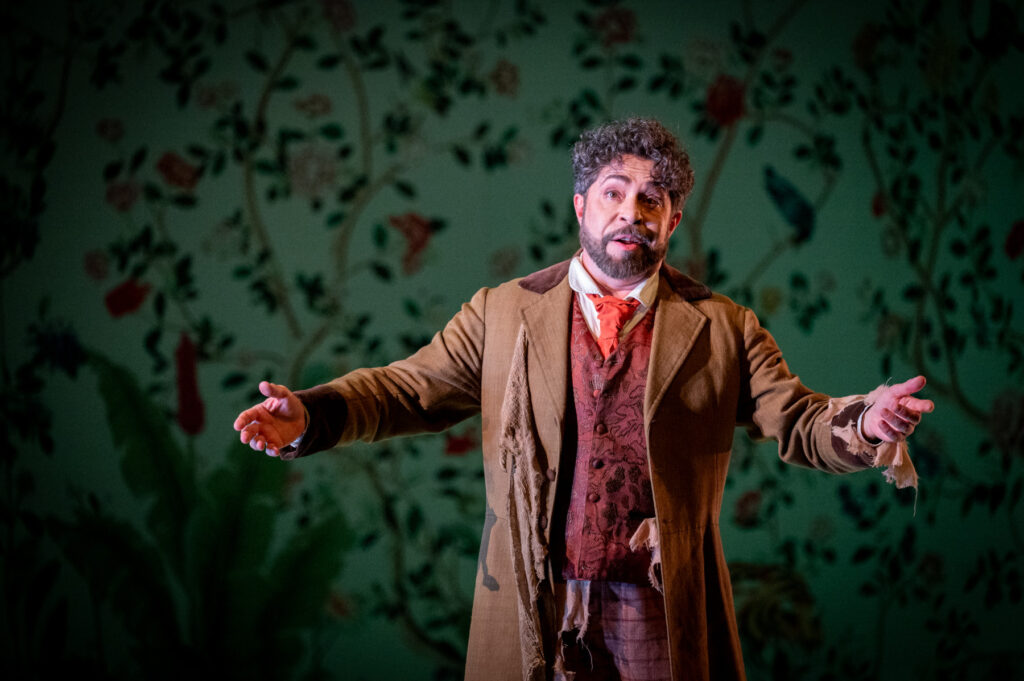Nineteenth-century Romantic opera is notorious for its trope of the person who goes mad – usually a woman whose struggle between her own individual desires, and the expectations imposed on her by figures of usually male authority or by society drives her to the point of distraction, as often as not with tragic consequences. Although Donizetti’s Il furioso nell’isola di San Domingo (1833) features Eleonora, who fails to live up to male expectations of marital propriety, it is not her who becomes mad but her husband, Cardenio, because of his jealous rage.

The literary basis of his insanity also has a rather more interesting pedigree than the cliché suggests, as the opera’s narrative is based on a play that ultimately derives from an episode in Cervantes’s Don Quixote. Incidentally, that episode also served as the source for a now lost Jacobean play called Cardenio, which has been attributed to Shakespeare. The connection with Cervantes’s figure puts a somewhat ironic spin upon Cardenio’s motivations in the opera. Whereas Don Quixote’s illusions – including his chivalric love for the noble lady Dulcinea, who, of course, doesn’t actually exist – are evidently an intrinsic part of his psychological make-up, prompting the whole sequence of would-be heroic actions and events narrated by Cervantes, Cardenio’s rage is perhaps little more than a vengeful fury prompted by a very particular event. If anybody demonstrates chivalry in the opera, it’s Eleonora, who is willing to die alongside him in his proposed suicide-pact, in expiation of her guilt for adultery, and his brother Fernando who attempts to save her from Cardenio’s rage.

Manuel Renga’s production for the Donizetti Opera Festival picks up on the idea of his fury as an intrinsic facet of character by noting the libretto’s image of madness as a tree whose roots remain in place forever even if its branches can be removed. That therefore happens to bring Cardenio and the scenario more into line with Cervantes, which is achieved by having the story replayed as a series of incidents in the mind of the aged Cardenio, perhaps now unsettled by dementia, mimed sensitively by Andrea de Manincor. He is found in a retirement home, and Renga says he thinks of the Casa di Riposo, founded by Verdi in Milan, so it’s perhaps deliberate that the elderly Cardenio resembles that composer in old age. Cardenio is prompted to recall the events of his past as he scrambles though his possessions which remind him of them, such as reading a book or album, just as the original Don Quixote develops his eccentric desire for a life of derring-do from his mania for old literary romances and epics.
The source play’s transference of the scene from Spain’s Sierra Morena to the exotic Caribbean island of San Domingo is cleverly evoked by the retirement home’s wallpaper of jungle scenes, as though creating a real, permanent prison of pained memory for Cardenio. It’s perhaps surprising, however, that the libretto’s implied references to slavery on that island, and the explicit distinctions between ‘white’ and ‘black’ people don’t draw any comment or interpretation in the staging, although the 1920s setting partly obviates that. But otherwise, the production makes an elegiac, sympathetic connection between the burden of memory and madness, or at least defective mental health, and so deepens our understanding of the latter as something more than the melodramatic or voyeuristic subject for an operatic entertainment.

Renga’s interpretation also respects the curious genre of Donizetti’s work, an instance of the fairly rare form of opera semiseria, which takes a serious topic, bordering on tragedy, but working through to a happy ending. The near-fatal drama between Cardenio and Eleonora sustains the work’s serious (and by no means sentimental) strand, while comedy is essentially confined to the buffo role of the servant Kaidamà, corresponding to Cervantes’s Sancho Panza (although he is employed by the island inhabitants Bartolomeo and Marcella here, not Cardenio). Although he comments wittily, even sardonically on the action, he doesn’t particularly hold it or Cardenio up as a figure of fun. The typical plot of a semi-serious opera features an imprisonment and release (as in perhaps the best-known of them, Rossini’s La gazza ladra). Renga also draws the connection with Cardenio’s metaphorical imprisonment by memory, and his eventual release and redemption from that in his reconciliation with Eleonora when he realises that her willingness to sacrifice herself reveals her sincere love for him after all, and he is reminded of that in his dotage, as the elderly Eleonora also appears in the retirement home in order to be with him. Instead of Cervantes’s comic, picaresque sophistication, Renga makes it almost a Proustian tale, then, of past time ultimately redeemed or saved by memory itself. It brings an ingenious psychological complexity and narrative circularity to what may otherwise seem to be a rather simple, linear drama.

The work’s serious element is well played up by Paolo Bordogna’s hefty account of Cardenio, and the steely, defiant edge brought to the role of Eleonora by Nino Machaidze. In the second half of this presentation (which begins somewhat uneasily with the finale of act one, owing to the opera’s structural imbalance of a prologue and a short concluding second act) they settle down into a broader lyrical strain, as reconciliation is sighted. Although in this performance, that only came about after a brief setback on Bordogna’s part, at the climactic moment of a duet but, to his credit, he regained his composure as though nothing had happened. Valerio Morelli and Giulia Mazzola convey an easy geniality – compassionate but also cheerful – as Bartolomeo and Marcella, the father and daughter who take Cardenio under their wing. Bruno Taddia is a droll Kaidamà, clownish in appearance and delivering his ironic asides with dry humour. Santiago Ballerini’s Fernando steals in with a ringing, heroic tenor voice, in apt contrast to the other, more compromised characters.
Alessandro Palumbo underlines the serious and sometimes melancholy temper of the production by taking a fairly broad view of the music with the Donizetti Opera Orchestra, that rightly tends to avoid frivolity or sparkle. But it certainly maintains suitable dramatic energy, as the pressure of events build up around Cardenio, reaching a warm, not explosive conclusion.
Curtis Rogers
Il furioso nell’isola di San Domingo
Composer: Gaetano Donizetti
Libretto: Jacopo Ferretti after an episode in Miguel de Cervantes’s Don Quixote
Cast and production staff:
Cardenio – Paolo Bordogna; Eleonora – Nino Machaidze; Fernando – Santiago Ballerini; Bartolomeo – Valerio Morelli; Marcella – Giulia Mazzola; Kaidamà – Bruno Taddia
Director – Manuel Renga; Set and costume designer – Aurelio Colombo; Lighting designer – Emanuele Agliati; Conductor – Alessandro Palumbo; Accademia Teatro alla Scala Chorus and Donizetti Opera Orchestra
Teatro Donizetti, Bergamo, Italy, Friday 21 November 2025
All photos by Photo Studio U.V.